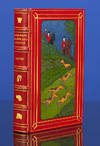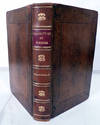
Nymphenburg
by Luisa Hager
- Used
- Paperback
- Condition
- Very Good+ condition
- Seller
-
Coeur d'Alene, Idaho, United States
Payment Methods Accepted
About This Item
Nymphenburg by Luisa Hager
photographs by Helga Schmidt-Glassner
publisher: Karl Robert Langewiesche Nachfolger Hans Koster - Bucherei, Königstein im Taunus, 1964
Paperback
6.15 x 8.15 inches, 40 pages
Nymphenburg borders Obermenzing in the north-west, Pasing in the south-west, Moosach in the north and Neuhausen in the south-east.
The borough 09 ranges from the Mars-field at the inner edge of town to the Nymphenburg Palace in the west and extends from the south part of the Olympic Park (including the Tollwood Summer festival area and the East-West Peace Church) over the villa colony in Gern to the railway tracks.
Neuhausen is a very quiet and calm residential area. It counts as one of the most exclusive and expensive boroughs in Munich.
Typical of the borough is its mix of different urban areas. Around the end of the 19th Century a prestigious residential neighborhood was built in the palace's vicinity, where numerous examples of late nineteenth century architecture, like the villa colonies Neuwittelsbach and Gern can be found.
In 1890 the borough Neuhausen was unincorporated, which had already been a prosperous district. It was dominated by residential and office houses in a closed, dense block-building style. Along the Arnulfroad and its side streets, these are often cooperative apartment buildings such as the partly under preservation attempt-settlement of the Bavarian Post and Telegraph Association and the village of Neuhausen. In the north of the Rotkreuzplatz there are more villas and town houses of the early days.
In the south along the railway tracks there are partly dominating large-scale commercial used buildings. Center and urban hub of the neighborhood of the Rotkreuzplatz. Some well-preserved buildings from the founder and inter-war period with the rich variety of green spaces give Neuhausen a high quality of living. While the old quarters in the vicinity of Nymphenburgerstreet and Blutenburgstreet are home to upper middle class for some time, the sometimes less sumptuously executed turn of the century buildings offer in the vicinity of Schulstreet and Donnersbergerstreet housing for various population groups. But has also kept the so-called gentrification catchment by road trains and remodeled buildings were renovated. In addition, there were numerous conversions take place in condominiums and shops were once easy to architectural firms, alternative shops, bars and restaurants. For this reason, the City Council in 2006 extended the statute for preservation of this neighborhood, to counteract the displacement of ancestral inhabitants.
On 1 January 1891 the independent municipality Nymphenburg was incorporated to the city of Munich.
It is named after the Nymphenburg Palace, former summer residence of the Bavarian kings. Today the castle along with the Nymphenburg Palace Park is one of the most popular sights of Munich.
The in 1747 by Elector Max III. Joseph founded Nymphenburg Porcelain Manufactory, the Royal Stables Museum of Nymphenburg and the Museum of Man and Nature is located next to the palace. On the Nymphenburg Palace Park also borders the Botanical Garden, which entrance is near the Bavarian State Office of Weights and Measures. The Hirschgarten and the Olympic Park complement the diverse range of parks and recreational areas. Because the borough is connected by the motorway A8 and the ring road it is charged by high traffic volumes. Neuhausen-Nymphenburg has about 90,000 inhabitants, according to Ramersdorf-Perlach the second highest population of the boroughs of Munich. In the north of Neuhausen, between the borough is Gern and Moosach-Nederling, in the northeastern the borough of Ebenau.
The jobs of the district are in addition to trade and service sector largely in the public sector. Apart from the branch of Deutsche Bahn, the Bundeswehr's administrative center, the Bavarian State Criminal Police Office, and numerous hospitals, such as the Red Cross Hospital, the German Heart Center, the Brothers of Mercy Hospital and the Third Order Hospital there are also major social institutions in the borough.
The proportion of foreigners Nymphenburg is low, in Neuhausen it is average. Regarding the age distribution Neuhausen is the younger of the two districts.
Very Good+ condition
Reviews
(Log in or Create an Account first!)
Details
- Bookseller
- Worldwide Collectibles
(US)
- Bookseller's Inventory #
- 0430202407
- Title
- Nymphenburg
- Author
- Luisa Hager
- Illustrator
- photographs by Helga Schmidt-Glassner
- Book Condition
- Used - Very Good+ condition
- Quantity Available
- 1
- Binding
- Paperback
- Publisher
- Karl Robert Langewiesche Nachfolger Hans Koster - Bucherei, Königstein
- Place of Publication
- Taunus
- Date Published
- 1964
- Pages
- 40
- Size
- 6.15 x 8.15 inches
- Weight
- 0.00 lbs
- Keywords
- Nymphenburg, Germany
Terms of Sale
Worldwide Collectibles
Payments are expected within 10 days unless prior arrangements are made.
About the Seller
Worldwide Collectibles
Biblio member since 2001
Coeur d'Alene, Idaho
About Worldwide Collectibles
Our specialties are unusual books, unusual CDs, and sports memorabilia
Glossary
Some terminology that may be used in this description includes:
- Good+
- A term used to denote a condition a slight grade better than Good.



